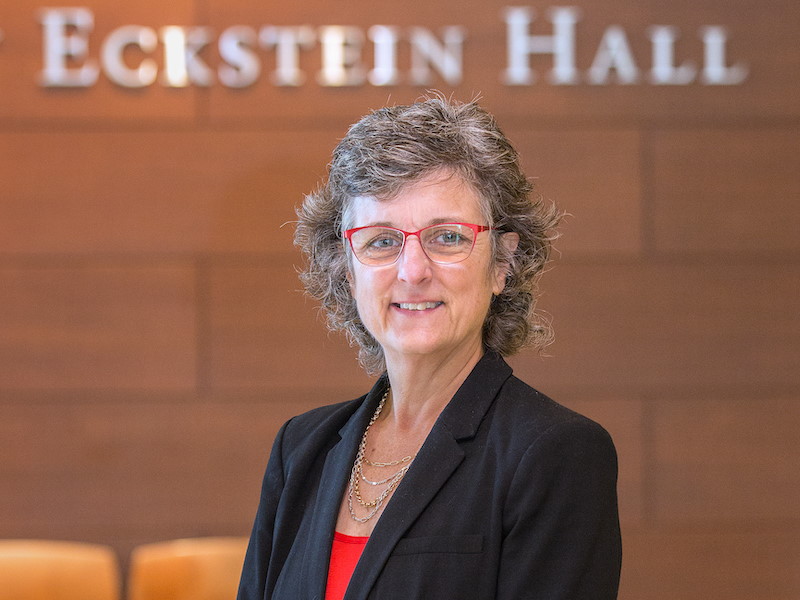Milwaukee’s Chief Judge Leaving Bench For Marquette Job
Mary Triggiano to lead Marquette Law School's Center for Restorative Justice.
After more than 18 years on the bench in Milwaukee, Chief Judge Mary E. Triggiano announced that she will be stepping down to take a job as the director of the Andrew Center for Restorative Justice at the Marquette University Law School.
Triggiano would have been up for re-election in spring 2023. She told Urban Milwaukee that she plans to submit a statement of non-candidacy for the election. She said she won’t transition to her new job at Marquette for another six months
Triggiano was elected chief judge of the Milwaukee Circuit Court by her fellow judges in February 2020. “Thirty days after I became chief, I shut the courts down and sent everybody home,” she said. “And the day after that we started preparing to come back.” The chief judge does not have a court calendar, rather they preside over the administration of the court. “The majority of my time became crisis management and COVID recovery.”
At Marquette, Triggiano will lead a relatively new center for the law school focusing on an approach to justice that is itself relatively new to the U.S. justice system. Restorative justice, in Triggiano’s words, is “a different way of proceeding when harm has been committed. It’s a way of really centering the victim of a crime or adversity, letting them tell their story and trying to find a path for healing for them.”
There are a number of actual processes for attempting restorative justice, though, they all begin with the victim, she said. “It’s the victim that guides the resolution the repairing of the harm.” For instance, this can take the form of victim-offender panels, or dialogue, but in some way, Triggiano explained, storytelling is often at the heart of a restorative justice process.
More than a decade ago, Triggiano was presiding over the children’s court when it was using victim-offender panels with youth that had been charged as a first offense. A case that sticks out in her mind was that of a young man that was charged with criminal damage to property after smashing up a car dealership with his friends.
Then it came time for the teenagers to speak, “and you could see he was really focused on what was being said,” and he went on to explain that his mother had lost her job and he could see how stressed and anxious she had become and the ways it was affecting the family. After the panel, the teenager was on probation and the owner of the dealership connected with the kid and asked him to come work at his dealership. That’s how the owner wanted to repair the harm “because I think he saw some goodness in this kid,” said the judge.
“So, for me, it can run in conjunction with the traditional processes of a criminal court proceeding,” she said. “It can be added to it, it can be preventative in terms of working with youth, and it can be something that we do once people are sentenced and in an institution.”
Triggiano’s entire legal career, beginning with law school, is filled with cases and anecdotes and court experiences that have convinced her of the need to see the human side of the justice system, and better understanding human behavior and the people that enter the system. “Because if I know that, then my response might be different than what it would be,” she said. “And it might be more helpful.
Geske created a “wonderful foundation” for the restorative justice program at Marquette, Triggiano said, “So since my father was a carpenter I get to say, I’m going to do some additions to that foundation.”
Triggiano, 59, was appointed to the bench in 2004 by then-governor Jim Doyle. She was previously an attorney with Legal Action of Wisconsin.
She will join Municipal Court Judge Derek Mosley as new members of the law school’s staff. Mosley announced his new assignment and judicial resignation earlier this month.
MKE County
-
J.D. Vance Plays Up Working Class Roots, Populist Politics in RNC Speech
 Jul 17th, 2024 by Graham Kilmer
Jul 17th, 2024 by Graham Kilmer
-
Ron Johnson Says Free-Market Principles Could Fix Education
 Jul 17th, 2024 by Graham Kilmer
Jul 17th, 2024 by Graham Kilmer
-
RNC Will Cause Some County Services To Be Moved to Wauwatosa
 Jul 12th, 2024 by Graham Kilmer
Jul 12th, 2024 by Graham Kilmer






















